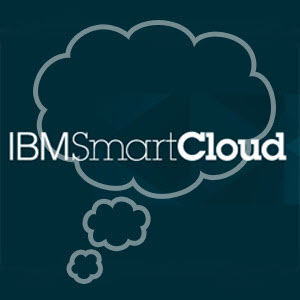Canadian EMRs Save $1.3 Billion
It is important to understand the impacts Canada’s investments in health information and communications technologies are having on the health care system.
To that end, Infoway developed a Benefits Evaluation framework and strategy in 2006, which has since been applied against projects across Canada.
The basic premise of the framework is that once sufficient progress has been made around deployment, adoption and evaluation for a given area of investment across Canada, Infowaycommissions a study to understand and communicate the impacts.
Three such independent benefits evaluation studies have been commissioned in recent years.
While these evaluations illustrate the current value being delivered by the investments made byInfoway and its jurisdictional partners, other data also demonstrate the critical mass that is building in these respective areas as clinicians increasingly adopt and use the technologies that have been implemented.
Four major benefit evaluation studies have been carried out since 2008:
- EMR Evaluation
- Telehealth evaluation
- Drug Information Systems (DIS) evaluation
- Diagnostic Imaging (DI) systems evaluation
Related resources:
- For more information, download the executive summary or the full report.
EMR Evaluation
In 2012, Infoway commissioned its fourth pan-Canadian study, to determine the current and emerging effects of implementing electronic medical records (EMRs) in community-based practices in Canada.
This study, entitled The emerging benefits of electronic medical record use in community-based care, shows that since 2006, use of EMRs in primary care has doubled while efficiency, safety, and other benefits valued at more than $1.3 billion have been seen by community-based clinicians and the health system as a whole.
The study also demonstrates the potential of EMRs to improve communication among members of the care team, as well as communication between providers and their patients.
While it illustrates how the benefits of EMR use are accruing today, the study also shows the even greater potential that lies in expanded adoption of EMRs and in the richer use of these systems including the use of advanced features such as tools and alerts prompting follow-up; and use of EMR data that will help clinicians with illness prevention and chronic disease management.
Telehealth evaluation
In 2010, Infoway commissioned its third benefits evaluation study, this time on telehealth. As outlined in the report, Telehealth Benefits and Adoption: Connecting People and Providers Across Canada, telehealth has delivered a number of access, quality and productivity benefits for clinicians, patients and the health care system.
Amongst the study findings, the report uncovered that Canada has one of the largest telehealth networks for videoconferencing, globally. In 2010, 5,710 telehealth sites were being used in at least 1,175 communities across the country. That year, nearly 260,000 sessions where held on the network, often involving two or more clinicians collaborating on patient diagnosis, monitoring and treatment.
Of the total telehealth sessions, nearly one-third (94,000) are estimated to have been from rural and remote communities in Canada. These events saved Canadians approximately 46.8 million kilometres of travel, representing 5.6 million litres of gasoline and nearly 13 million kg of CO2 emissions (equivalent to 2,760 fewer cars on the road). The study estimates that telehealth helped patients save $70 million in personal travel costs.
The territories, including Nunavut, Northwest Territories and Yukon, demonstrate the highest per-capita penetration, illustrating how important telehealth is in these vast, predominately rural and remote areas.
The report also indicates that Telehomecare has demonstrated significant value and future potential, providing improved quality of care for patients with chronic diseases and avoiding utilization of emergency and hospital services valued at over $20 million annually.
Findings of the report suggest that telehealth is becoming a mainstream way of delivering care. Based on historical data from telehealth programs assembled for this report, telehealth use has grown at a rate of over 35% annually over the past five years. Assuming growth of 20% and 40% per year, 1.2 million consultations could be reached within five to 10 years.
Drug information systems (DIS) evaluation
Our second benefits evaluation study detailed the net quality and productivity benefits being realized as a result of investments in second generation drug information systems (DIS), with a focus on the resulting improvements to patient safety.
The study estimated overall benefits valued at $436 million as of March 2010, from use of drug information systems and early adoption of e-prescribing. Of that amount, about $252 million came from improved safety and quality of care: fewer adverse drug events, reduced prescription abuse, increased medication compliance and improved patient and provider satisfaction.
The remaining $184 million came from increased provider productivity – greater pharmacist efficiency and fewer call-backs – and improved drug cost management.
Download the report summary or the full report.
Other data shows there has also been significant growth in the number of users of the systems. In March 2005 there were an estimated 10,000 users of these technologies. By March 2011, the number had tripled to more than 30,000 estimated users across Canada.
Once fully implemented across Canada, these second generation DIS could result in up to $1 billion a year in benefits. Benefits could potentially be as high as $2.3 billion annually once third generation DIS (systems with advanced functionality, such as allowing authorized providers to electronically prescribe to a patient’s pharmacy of choice) are fully implemented and optimized across the country.
Diagnostic imaging (DI) systems evaluation
In the case of diagnostic imaging (DI) systems, the evaluation illustrated there were about 20,000 users of the technology in March 2005. As of March 2011 that number had doubled to an estimated 43,000 users.
Once Canada’s investments in digitizing diagnostic imaging are complete, the productivity of the country’s radiologists will increase to a level that could otherwise be achieved only if there were 500 more of these specialists working across Canada.
DI systems are also improving productivity for doctors and technologists, as well as improving remote reporting capabilities and access to care. DI systems also cut turnaround time by 30-40 per cent, meaning patients got their diagnosis faster, and their treatment started sooner.
Download the report summary or the full report for more information.
Clinician benefits
Health care professionals, including doctors, radiologists and technologists, all benefit from the PACS systems. The elimination of a film environment is helping to offset the physician shortage. That’s because health care professionals are being provided with the electronic tools they need to improve their productivity and efficiency.














You must be logged in to post a comment Login